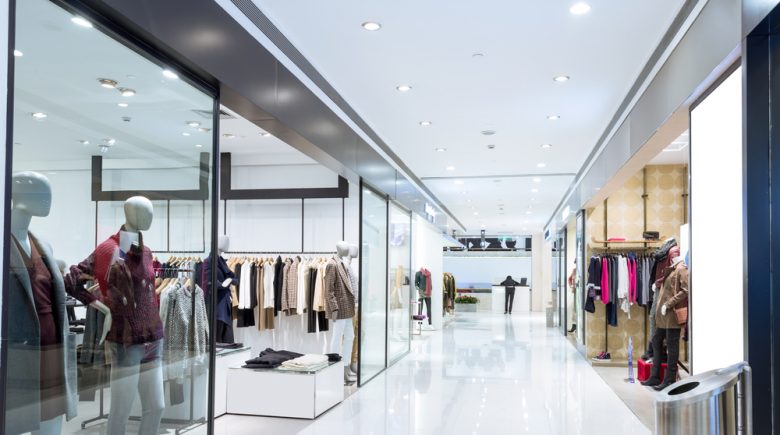Anyone who has been to their local shopping mall within the last year, or even the last six months, will have noticed that many stores are shutting their doors. Brick-and-mortar stores across the country are closing. This isn’t new—stores often close, but many more than usual have been closing since 2018. Some are only closing a handful of their locations. Others are closing dozens of stores in order to shore up other stores that are doing well. Other retailers are going out of business entirely. And these closures often happen suddenly, leaving consumers to wonder what is happening and leaving employees without jobs.
The answer to why so many traditional stores are closing is a simple one. Technology is the way of the future. Online stores such as Amazon and eBay are often more popular with shoppers, particularly younger shoppers. These online retailers can offer a huge range of goods. Even if they are specialized in one area, they can often offer their customers a much wider selection than a traditional store can because there’s no need to keep things in stock in large numbers or to save display space. In addition, these online stores can offer items are competitive prices because their overhead is much lower than that of traditional brick-and-mortar stores.
Not only do these online retailers offer a massive selection at affordable prices, but online shopping is simple and quick. Shoppers can grab their phones or laptops, search for what they want, find the best deal, and place their order, all without leaving the comfort of their homes or even having to change out of their pajamas. In our fast-paced society, this fast form of shopping is not just convenient, but it is sometimes the only way people can make important purchases. Having that speed available means people are often more able to get exactly what they need without having to drive from store to store.
Another reason why online stores are more popular than traditional stores is because these two types of business cater to very different schools of thought when it comes to shopping. Shoppers from the baby boomer generation and older tend to favor the personal interaction of shopping in a traditional store. Millennials and Gen Z shoppers favor a different approach. Although they still appreciate the personal aspect of shopping, they’re looking for more specific things in their purchases. Many shoppers now want items that are artisanal or made by hand as opposed to something mass produced like one would generally find in a chain store in a mall. Other shoppers are looking for items that are customizable or sourced ethically. Both of these things are generally difficult to do when your store is a global brand.
However, although online shopping is certainly a boon in many ways to shoppers, it comes at an unfortunate cost. Large retailers are searching for ways to compete, and many simply can’t keep up. This means store closures, and it may mean that we now have to say goodbye to some of our favorite retailers. Up to 12000 different, individual stores could close in 2019. Retailers such as Charming Charlie’s, J.C. Penny, Charlotte Russe, Macy’s, and Bed Bath & Beyond will begin to close some if not all of their stores.
Other stores are trying to keep up with new technological trends and the demand for faster, better service and larger selections. Many brick-and-mortar stores have implemented their own online stores, with pricing and shipping competitive with some of the largest online retailers. Other stores now offer order pickup, which means customers can shop online and then pick their items up in the store, saving them time. They can even pre-pay or have their items brought directly to their car if they prefer. It is unclear yet whether this will make a difference in saving larger chain stores that are experiencing a decline in sales. Many people argue, however, that it’s best for these retailers to keep up with the times and be as competitive as possible in order to stay afloat.
Yet another reason why traditional stores are in jeopardy is because of the decline in popularity of malls. Between the 1970s and 2010s, malls were built all over the United States, until they reached a point of oversaturation. There were simply too many malls, and this meant that customers were spread out over these many malls, instead of shopping in large numbers at a few malls. Pair this with the decline of large department stores such as Sears, and what is achieved is a decline in foot traffic through malls. At one time, shoppers would have gone to a department store, done their main shopping, and then continued through the mall, stopping and purchasing items in different stores that caught their eye. Now, the over-saturation and the loss of those customer-drawing stores means people aren’t casually wandering through malls, and smaller chain stores are suffering for it.
Overall, it’s difficult to say whether the current change in shopping—from brick-and-mortar stores to more online ones—is a good thing or a bad thing. There are aspects of both on either side. Today, customers have a world of shopping at their fingertips and they can get whatever they like with speed and ease. However, this ease of shopping takes some of the personal experience out of shopping and makes it harder for smaller traditional stores to survive in the current economic climate.
Anyone who has been to their local shopping mall within the last year, or even the last six months, will have noticed that many stores are shutting their doors. Brick-and-mortar stores across the country are closing. This isn’t new—stores often close, but many more than usual have been closing since 2018. Some are only closing a handful of their locations. Others are closing dozens of stores in order to shore up other stores that are doing well. Other retailers are going out of business entirely. And these closures often happen suddenly, leaving consumers to wonder what is happening and leaving employees without jobs.
The answer to why so many traditional stores are closing is a simple one. Technology is the way of the future. Online stores such as Amazon and eBay are often more popular with shoppers, particularly younger shoppers. These online retailers can offer a huge range of goods. Even if they are specialized in one area, they can often offer their customers a much wider selection than a traditional store can because there’s no need to keep things in stock in large numbers or to save display space. In addition, these online stores can offer items are competitive prices because their overhead is much lower than that of traditional brick-and-mortar stores.
Not only do these online retailers offer a massive selection at affordable prices, but online shopping is simple and quick. Shoppers can grab their phones or laptops, search for what they want, find the best deal, and place their order, all without leaving the comfort of their homes or even having to change out of their pajamas. In our fast-paced society, this fast form of shopping is not just convenient, but it is sometimes the only way people can make important purchases. Having that speed available means people are often more able to get exactly what they need without having to drive from store to store.
Another reason why online stores are more popular than traditional stores is because these two types of business cater to very different schools of thought when it comes to shopping. Shoppers from the baby boomer generation and older tend to favor the personal interaction of shopping in a traditional store. Millennials and Gen Z shoppers favor a different approach. Although they still appreciate the personal aspect of shopping, they’re looking for more specific things in their purchases. Many shoppers now want items that are artisanal or made by hand as opposed to something mass produced like one would generally find in a chain store in a mall. Other shoppers are looking for items that are customizable or sourced ethically. Both of these things are generally difficult to do when your store is a global brand.
However, although online shopping is certainly a boon in many ways to shoppers, it comes at an unfortunate cost. Large retailers are searching for ways to compete, and many simply can’t keep up. This means store closures, and it may mean that we now have to say goodbye to some of our favorite retailers. Up to 12000 different, individual stores could close in 2019. Retailers such as Charming Charlie’s, J.C. Penny, Charlotte Russe, Macy’s, and Bed Bath & Beyond will begin to close some if not all of their stores.
Other stores are trying to keep up with new technological trends and the demand for faster, better service and larger selections. Many brick-and-mortar stores have implemented their own online stores, with pricing and shipping competitive with some of the largest online retailers. Other stores now offer order pickup, which means customers can shop online and then pick their items up in the store, saving them time. They can even pre-pay or have their items brought directly to their car if they prefer. It is unclear yet whether this will make a difference in saving larger chain stores that are experiencing a decline in sales. Many people argue, however, that it’s best for these retailers to keep up with the times and be as competitive as possible in order to stay afloat.
Yet another reason why traditional stores are in jeopardy is because of the decline in popularity of malls. Between the 1970s and 2010s, malls were built all over the United States, until they reached a point of oversaturation. There were simply too many malls, and this meant that customers were spread out over these many malls, instead of shopping in large numbers at a few malls. Pair this with the decline of large department stores such as Sears, and what is achieved is a decline in foot traffic through malls. At one time, shoppers would have gone to a department store, done their main shopping, and then continued through the mall, stopping and purchasing items in different stores that caught their eye. Now, the over-saturation and the loss of those customer-drawing stores means people aren’t casually wandering through malls, and smaller chain stores are suffering for it.
Overall, it’s difficult to say whether the current change in shopping—from brick-and-mortar stores to more online ones—is a good thing or a bad thing. There are aspects of both on either side. Today, customers have a world of shopping at their fingertips and they can get whatever they like with speed and ease. However, this ease of shopping takes some of the personal experience out of shopping and makes it harder for smaller traditional stores to survive in the current economic climate.



